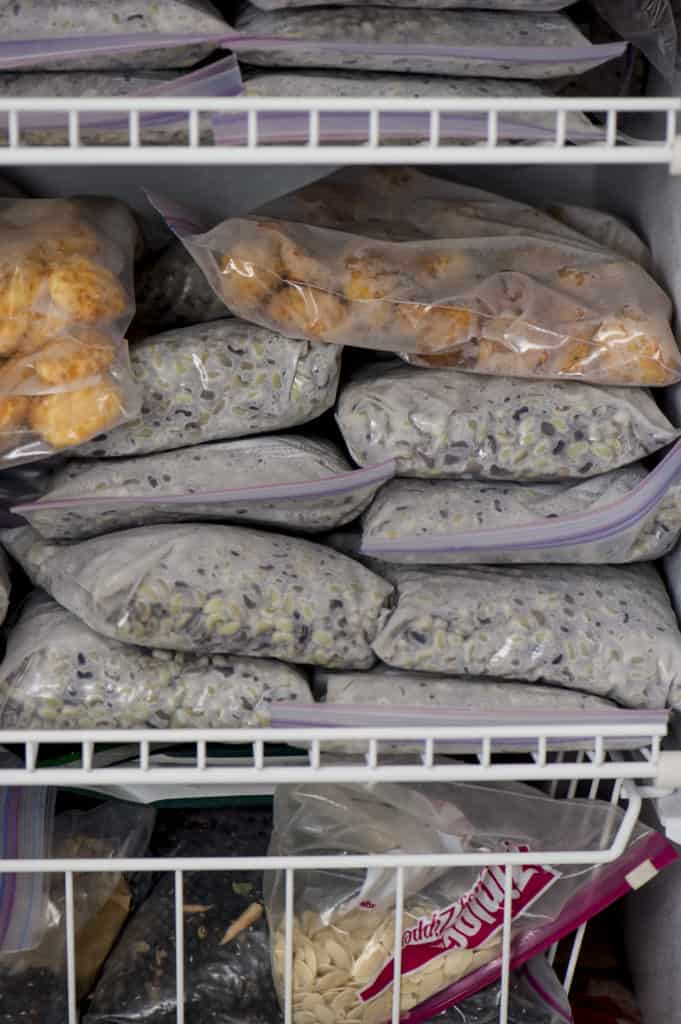
By Mary Ellen Shaw
At this time of year your garden can be pretty full and sometimes you have too much of a good thing! What can you do to get the most out of your crops?
The easiest solution is to freeze the items. That may involve a little work before they go in the freezer but you will be glad you took the time when winter rolls around and you are still eating what you grew!
For me the freezing season begins with rhubarb. I use it to make coffee cakes, conserve, bread and pie. All these items freeze well and keep for months. If I still have excess rhubarb I cut it in small pieces, write the number of cups on the freezer bag and into the freezer it goes!
Beans are usually the next item I freeze. Most people blanch them first, meaning you boil them then plunge them into ice water. After draining the water and letting the beans dry they are ready for freezer bags. But others take an easier route. They wash the beans in cool water, pat them dry with a paper towel, trim the ends and pack them into a freezer bag with excess air squeezed out.
Whatever method you prefer you can enjoy them in soups or casseroles over the next few months.
When tomatoes start ripening there are usually too many to eat directly off the vine. My “go to” method of dealing with the excess is to make sauce and freeze it in individual size portions. That way when you head to the freezer you will find just what you need for a serving of pasta. Tomatoes are another item that can be frozen without blanching. Just wash and dry them and into a freezer bag they go! They will be great in soups or stews. If you want to remove the skins before using them in cooking, run water over the frozen tomatoes and the skins will come off easily.
It would be nice if you could pop zucchini in the freezer directly from the garden but that won’t work! So I puree it and measure out three cups which is the amount I need to make two loaves of bread during the winter. A tip for storage is to flatten the bags of puree and you will have a lot more storage space in your freezer.
Kale and carrots can be cooked, dried and then frozen. I use the kale often in omelets and soups throughout the winter. I freeze the carrots in portions that my husband and I can enjoy with our dinners. Glazing them after thawing is a nice way to serve them.
Strawberry season has passed but blueberries are now ready. They can be popped into muffin batter directly from the freezer. What can be more convenient than having blueberry bushes on your property? Just stroll on down and pick them when they are ready. We only have one bush but it provides enough berries for over a dozen batches of muffins. We enjoy those all winter.
Soon it will be pumpkin season and if you don’t mind spending the time to clean them and cook them you can enjoy a homemade Vermont pumpkin pie for dessert at Thanksgiving. I also puree the pumpkin and freeze it in portions equal to my bread recipe. It’s delicious!
If you are not a gardener your local farmers’ market or farm stand can provide you with the items they grow. An added bonus is that they can answer any questions you might have about how their products are grown.
It surprises me how much fresher my own veggies taste compared to the same items that are available all winter in a grocery store. One of our best investments was buying a large freezer mainly for holding as many of the items that we grow as possible.
Hopefully I have given you some ideas of how to use the “extras” that our gardens will provide. For those items which have gone by at this time of year you can look forward to freezing them during next summer’s growing season.
Enjoy all the fresh veggies that are coming our way. Summer will be over before we know it!




